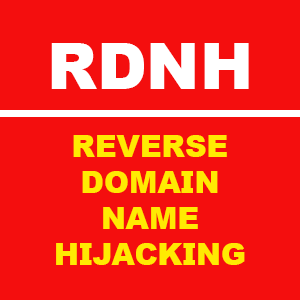
RDNH finding for Normann.com
The UDRP against the aged domain Normnann.com ended up with a RDNH finding.
Its Danish registrant, Peter Normann, has held the domain since its registration 21 years ago; the Complainant was Normann Copenhagen ApS of Copenhagen, Denmark.
According to the UDRP:
The Complainant was established in 1999 and has grown to be one of the leading Danish design firms, producing furniture, decorations and other handicrafts.
The Complainant is the owner of several registrations for the trademark NORMANN COPENHAGEN, including the Denmark trademark, registration number no. VR 2008 00469, registered on January 28, 2008, as well as a number of domain names containing “normann-copenhagen” or “normann” as second level domain.
It makes no sense to bring a UDRP against a person whose family name probably goes back hundreds of years, but it was also used to provide professional domain registrar services:
“The Respondent rebuts the Complainant’s allegation that the disputed domain name has not been used for business purposes. The Respondent has previously provided IT consultant services, including the development of IT solutions, as well as the hosting of these under the disputed domain name <normann.com>. Furthermore, the Respondent has been accredited as a domain name registrar since 2002 under the name servers “ns.normann.com” and “ns2.normann.com”, all of which is evidenced in annexes to the Response.
Finally, Normann is the Respondent’s family name and the Respondent, as well as other family members, is currently making a legitimate noncommercial use of the disputed domain name for email addresses.”
Not only did the WIPO panelist Knud Wallberg find no bath faith in this case, ordering the domain to remain with the Respondent, he also slapped the Complainant with a finding of Reverse Domain Name Hijacking.
For the full decision on Normann.com, click here.
Copyright © 2025 DomainGang.com · All Rights Reserved.













I’m curious, can you please explain “bath faith” in this instance?
Logan – from the UDRP details:
“The Panel thus finds on the available record that there is no evidence or indication that the disputed domain name was registered for the purpose of profitable sale, or in a pattern of making blocking registrations, or to disrupt the Complainant’s business, or to confuse the Complainant’s customers, or for any other reason than to register a domain name that reflects the Respondent’s family name.
Further, the Panel finds that there is no evidence or indications that the disputed domain name has been used in bad faith. On the contrary, as mentioned above the domain has been used as URL-address for the website of the Respondent’s then business and is currently being used for the Respondent’s email address.”
Bad Faith:
They knew the domain was being used, but lied about it.
They knew Respondent had legitimate use of the domain (even had mail correspondence with Respondent on said domain), but stated otherwise.
They claimed bad faith on Respondent even though the domain was registered and used years before the Complainant even existed and more than a decade before they registered a trademark.
They lied about Respondent dismissing offers trying to get higher bids and tried to proof this by cherry picking parts of the mail correspondence, leaving out the important parts.
They were basically lying through their teeth about pretty much everything, trying to distort all the facts and make Respondent look like a criminal.
The list goes on. The case was ludicrous.
Source: Am Respondent.